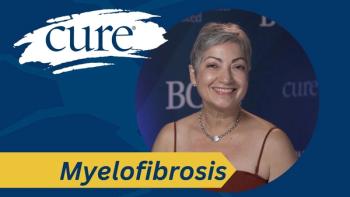Adolescents and adult patients with advanced Hodgkin lymphoma benefitted most after receiving Opdivo (nivolumab) plus a chemotherapy regimen versus treatment with Adcetris (brentuximab vedotin) plus the same chemotherapy regimen.
Patients with Hodgkin lymphoma who received Opdivo plus Adriamycin (doxorubicin), vinblastine and dacarbazine (AVD) also showed a better side effect profile, according to the S1826 trial, published in The New England Journal of Medicine.
In the study, 970 patients aged 12 years and older were randomly assigned to be treated with Opdivo plus AVD (487 patients) or Adcetris plus AVD (483 patients).
During an analysis, researchers found that patients from the Opdivo-AVD combination group demonstrated significantly improved progression-free survival (PFS) compared with patients who received the Adcetris-AVD combination. Of note, the PFS at one year was 94% among patients in the Opdivo group and 86% among patients in the Adcetris group.
Glossary:
Progression-free survival (PFS): time patients live without their disease worsening or spreading after treatment.
Event-free survival (EFS): time after treatment ends when patients do not experience complications or events from cancer, meaning that treatment worked.
Overall survival (OS): time patients live after treatment, regardless of their disease status.
Febrile neutropenia: lower levels of white blood cells, causing a fever. This complication is associated with chemotherapy.
Sepsis: the body’s extreme reaction to an infection, which can be life-threatening.
At a median follow-up of 2.1 years, the two-year PFS was 92% in patients who received Opdivo plus AVD versus 83% in patients who received Adcetris plus AVD, according to the study.
“The S1826 trial showed that [Opdivo plus AVD] improved PFS as compared with [Adcetris plus AVD] in adolescent and adult patients with advanced-stage classic Hodgkin lymphoma,” the researchers wrote. “Event-free survival (EFS) was also longer in patients with patients receiving [Opdivo plus AVD].”
EFS and Overall Survival With Opdivo Plus AVD Versus Adcetris plus AVD
The two-year EFS was 90% in patients from the Opdivo group, compared with 81% in patients from the Adcetris group, researchers found.
They found that death from any cause was reported in seven and 14 patients from the Opdivo and Adcetris groups, respectively. Three patients from the Opdivo group died during treatment and eight patients from the Adcetris group died during treatment, the study stated.
Regarding overall survival (OS) at a follow-up of 2.1 years, the OS was 99% in the Opdivo group versus 98% in the Adcetris group, researchers reported.
“In addition to [Opdivo plus AVD] providing greater efficacy, [Opdivo plus AVD] also had a better side-effect profile than [Adcetris plus AVD],” the researchers wrote. “More patients discontinued treatment with [Adcetris] than with [Opdivo], and overall, most of the [side effects] occurred less frequently in the [Opdivo plus AVD] group than in the [Adcetris plus AVD] group.”
Safety of Opdivo Plus AVD and Adcetris plus AVD
Among patients from the Adcetris group, nearly all side effects occurred more frequently except neutropenia (low levels of white blood cells) and arthralgia (aching joints), the researchers found. Common side effects of grade 3 (severe) or worse included nausea (65% reported in the Opdivo group versus 70% reported in the Adcetris group), fatigue (47% versus 51%), lower levels of neutrophils (white blood cells; 56% versus 34%) and anemia (39% versus 46%).
Of note, the researchers determined that high-grade side effects — except neutropenia — occurred more frequently among patients who were treated with Adcetris plus AVD.
Specifically, neutropenia of any grade was reported in 272 patients from the Opdivo group and 160 patients in the Adcetris group, according to the researchers. Grade 3 or higher neutropenia occurred in 232 patients versus 126 patients from the Opdivo and Adcetris groups, respectively.
Similar side effects among both groups included febrile neutropenia, sepsis and infection. However, researchers noted that these side effects more commonly occurred in patients who were older and were treated with Adcetris plus AVD.
Early treatment discontinuations occurred in 37 and 58 patients from the Opdivo and Adcetris groups, respectively, researchers stated in the study. The most common reason for treatment discontinuation was because of side effects. Discontinuation of treatment at any time during the study occurred in 46 and 107 patients from the respective groups.
Dose reductions (lessening the amount of treatment) occurred in 129 patients from the Adcetris group, but dose reduction of Opdivo was not allowed, researchers noted.
“On the basis of the clinically meaningful improvement in PFS and excellent side effect profile of [Opdivo plus AVD],” researchers wrote, “the opportunity to avoid potentially toxic consolidative radiation therapy, and the decreased drug-acquisition and supportive-care costs, [Opdivo plus AVD] should be a strong candidate for primary treatment in adolescent and adult patients with stage 3 or 4 Hodgkin lymphoma.”
Reference:
“Nivolumab+AVD in Advanced-Stage Classic Hodgkin’s Lymphoma” by Dr. Alex F. Herrera, et al., The New England Journal of Medicine.
For more news on cancer updates, research, and education, don’t forget to subscribe to CURE®’s newsletters here.





